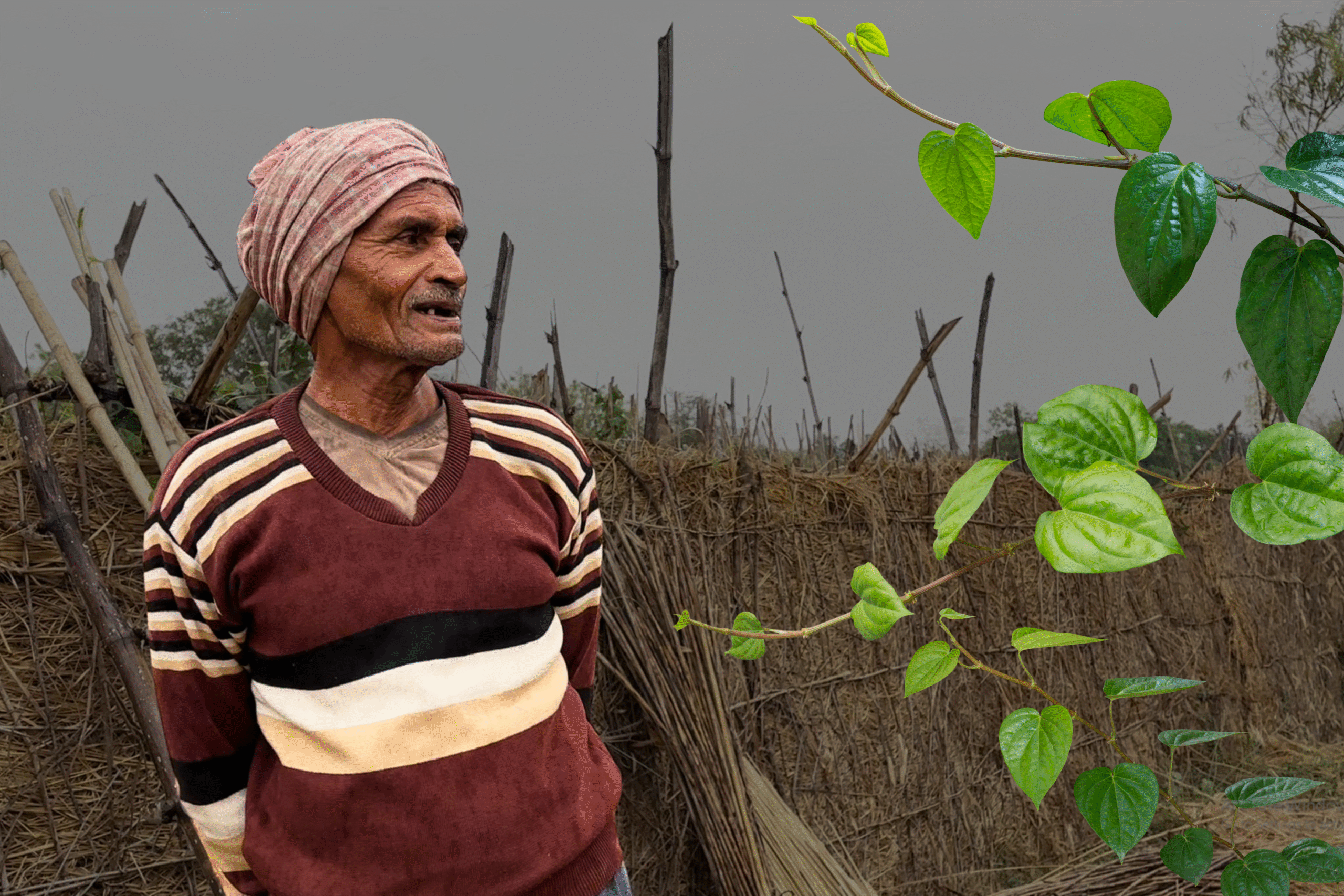Bhubaneswar, Odisha
Dhenki is making a comeback in rural Odisha. Women from 20 self-help groups (SHGs) in 12 villages of Mayurbhanj district are using the traditional dhenki to prepare red rice. Sale of this nutritious rice variety is helping these women, who belong to the Santal, Bathudi and Bhumija tribal communities, earn their livelihoods.
The dhenki is usually a wooden beam on a fulcrum that moves up and down and has a rod with a metal cup, or sama, at one end that threshes the rice. The rice is then winnowed to separate the chaff from the grain.
The women from the SHGs in Kaptipada tehsil pound indigenous paddy varieties such as mugei, ram sal and kala champa. The paddy comes from 80 acres of low land within the Similipal Forest Reserve in Mayurbhanj district. With permission from the forest department, about 60 tribal farmers grow and supply these indigenous paddy to the SHG women who prepare the dhenki red rice.
Each SHG of women has 12 members, and almost all of them are wives of farmers. They prepare dhenki-pounded red rice to augment the family income.
“Dhinki pounded red rice is highly nutritious, as it keeps the nutrients intact,” Mihir Ranjan Mohanty, scientist at Krishi Vikas Kendra, Jeypore, Koraput district, told Gaon Connection.
“Mechanised hullers substantially reduce the nutrient content in the rice due to heat generated during the process. And the rice is further stripped off its nutrient content when its outer layer or bran is removed (chokoda as it is called in Odia),” said Mohanty, who is an expert in indigenous paddy.
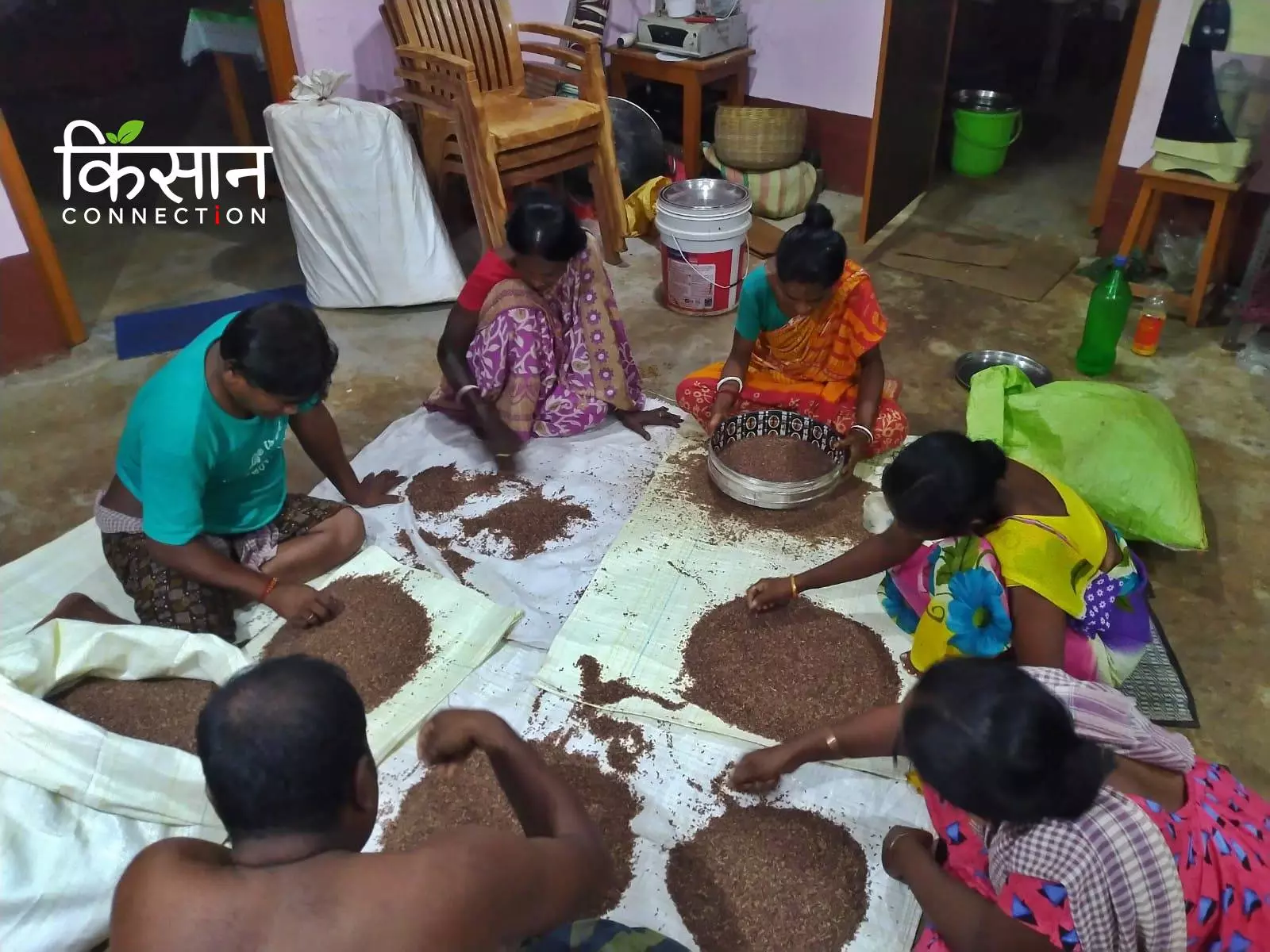
The rural women were also trained to use the dhenki.
“The dhenki-pounded red rice is special, because its nutrients remain intact. It is very rich in iron, zinc, magnesium and calcium,” the scientist added.
Reviving the dhenki red rice
Not that long ago, women in the eastern state, manually hulled rice using these wooden dhenki to separate the husk of the paddy from the grain. Thereafter, they undertook the laborious and time consuming job of boiling the paddy in earthen pots over wood fires, spreading it out in the sun to dry, and finally manually picking out stones from it.
The revival of the dhenki-pounded rice, that had been gradually disappearing because of the intensive labour it required, got a boost in 2020-21, when the Integrated Tribal Development Agency (ITDA) formed Van Dhan Vikas Kendras in Agnikumari, Kusumghati, and Devghati villages.
The central government, under the Pradhan Mantri Van Dhan Yojana, gave Rs 15 lakh to ITDA through the state implementing agency Tribal Development Cooperative Corporation Limited.
Also Read: Give me red: Indigenous red rice is fast making a comeback in the fields of Himachal Pradesh
“The ITDA provided 66 dhenkis that the women of the SHGs use to produce the red rice,” Debdatta Panda, project administrator ITDA, based in Kaptipada, told Gaon Connection.
The rural women were also trained to use the dhenki. “Training was necessary to introduce the younger women to the use of dhenki as most of them, unlike their mothers and grandmothers, did not quite know how to use it,” said Pranab Das, ITDA project manager based in Kaptipada.
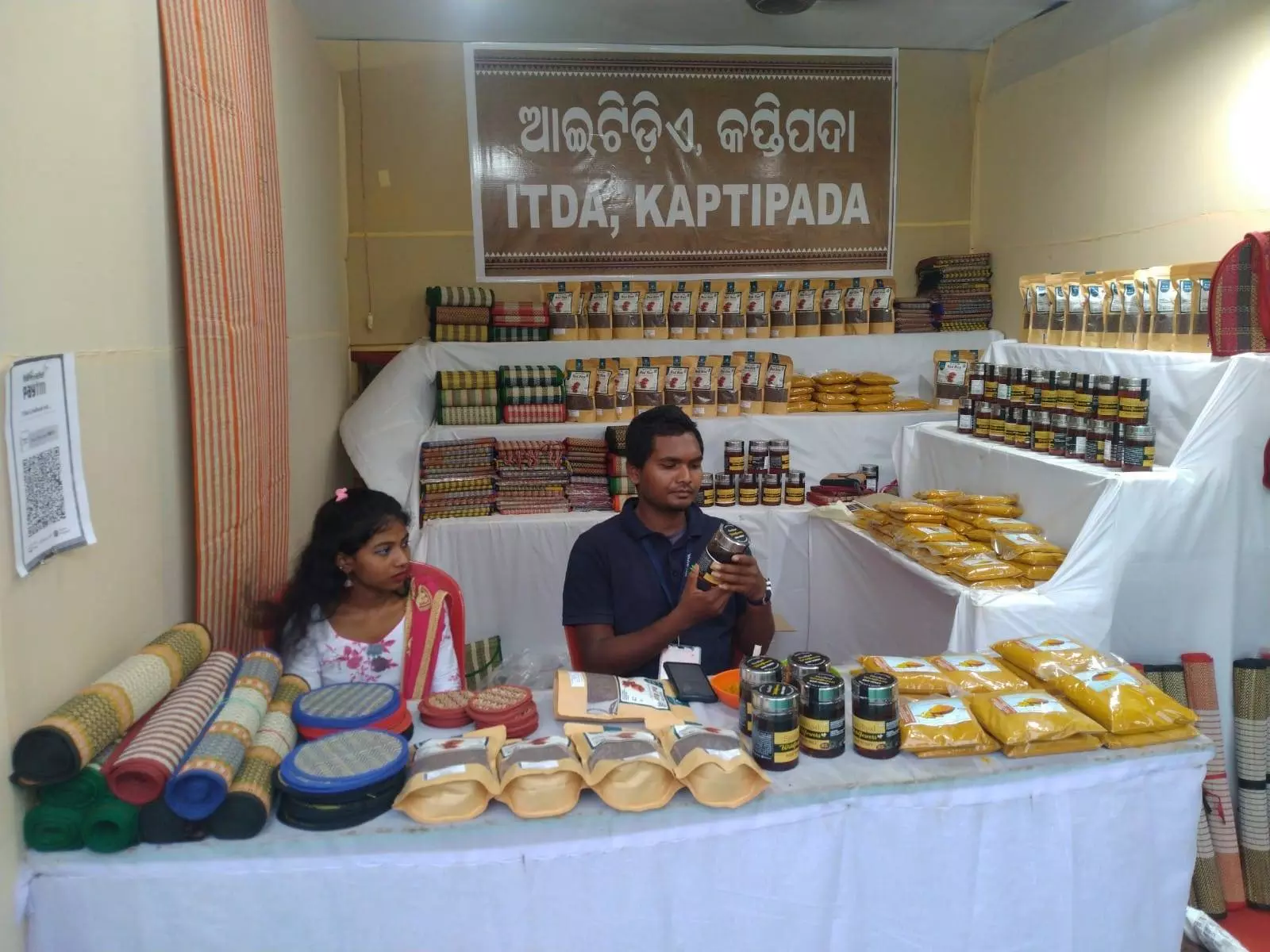
According to ITDA project manager Pranab Das, many health conscious people are seeking dhenki-pounded rice.
Some of the older women in the communities were roped in to train them, he added. The training was done with the help of an NGO called Tribal Livelihood Initiatives.
Mechanisation is also welcome
Apart from promoting dhenki, the administration is also providing machines to the SHG women to cut down on some of the laborious processes. With the introduction of automated machinery, the cleaning of the dhenki-pounded red rice is less cumbersome.
“While we still use the dhenki, there is now a steamer to boil the paddy and an air dryer to dry it. There is also a de-stoning machine that filters out the stones from the rice,” Suhagi Tudu, president of Gram Devti SHG in Agnikumari village, told Gaon Connection. There is also a packaging machine that helps pack the grains easily and hygienically, she added.
Also Read: The ‘Gola’ grain storage facility in rural Odisha
Of the Rs 15 lakh rupee grant by the central government, Rs 10 lakh was used for purchasing machines for the processing, destoning, packaging, etc. These machines are installed at the Facility Centre (FC) in Agnikumari village. All the SHGs use these facilities.
“Machines have been installed at the FC, while the 66 dhenkis have been installed in the village houses that have enough space to accommodate them,” said Pranab Das.
“Each dhenki is used by two to three SHG women who then use the machines at the Agnikumari Facility Centre to de-stone, boil, and dry the indigenous paddy,” he added. Apart from dhenki, the SHG women have been trained to use these machines as well.
The indigenous paddy from which red rice is made, takes less water to grow and it thrives even amidst adverse conditions, said Nirman Burman, who is in charge of the Centre in Agnikumari, told Gaon Connection. “It is grown in hilly areas and fed with water from the hill streams. The indigenous paddy is also pest resistant,” he explained.
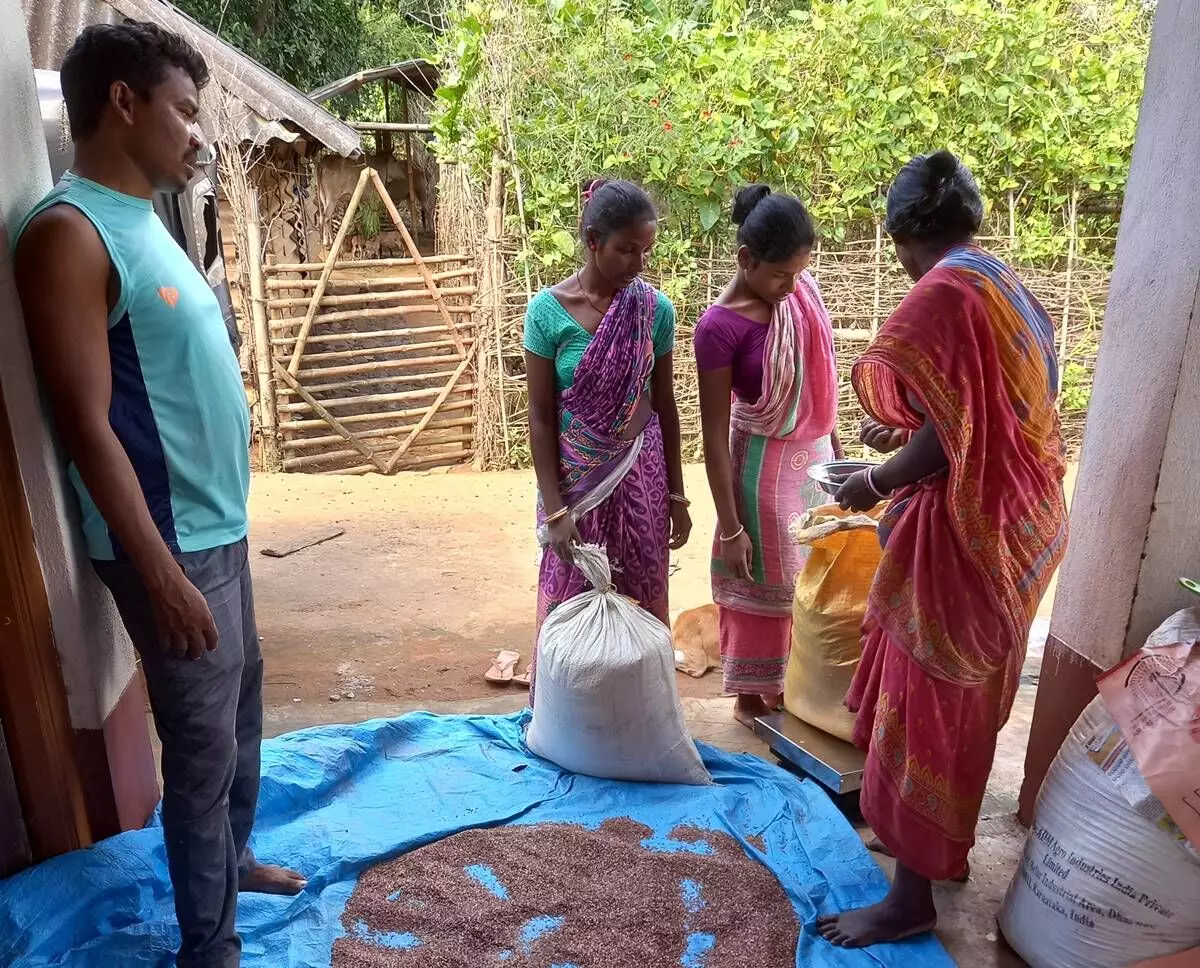
With the introduction of automated machinery, the cleaning of the dhenki-pounded red rice is less cumbersome.
Once the red rice comes to the FC, it is poured into aluminium drums that have been lined with neem and begunia leaves that keep pests away. “The drums are then sealed so that they are not exposed to any moisture,” Burman said.
“Now machines do things quickly to prepare the red rice that fetches a member anything between Rs 2,500 and Rs 6,000 every month,” Poma Murmu, president of Maa Durga SHG in Bahalda, told Gaon Connection.
Sale of dhenki red rice
“Annually, these SHGs produce over 780 quintals of red rice that is sold at Rs 65 to Rs 68 per kilogram to local traders who come to the Facility Centre to buy it,” Burman, who is in charge of the Centre in Agnikumari, told Gaon Connection. (1 quintal = 100 kg)
Outside the FC, at urban and semi-urban centres, the red rice sells for anything between Rs 80 and Rs 90 a kg. Burman said that while 40 per cent of the sales proceeds is kept aside for buying indigenous paddy, another 40 per cent is used for paying wages to the labourers, who load, unload, stack the packaged rice and so on. “The remaining 20 per cent is distributed amongst the SHG women,” Burman said.
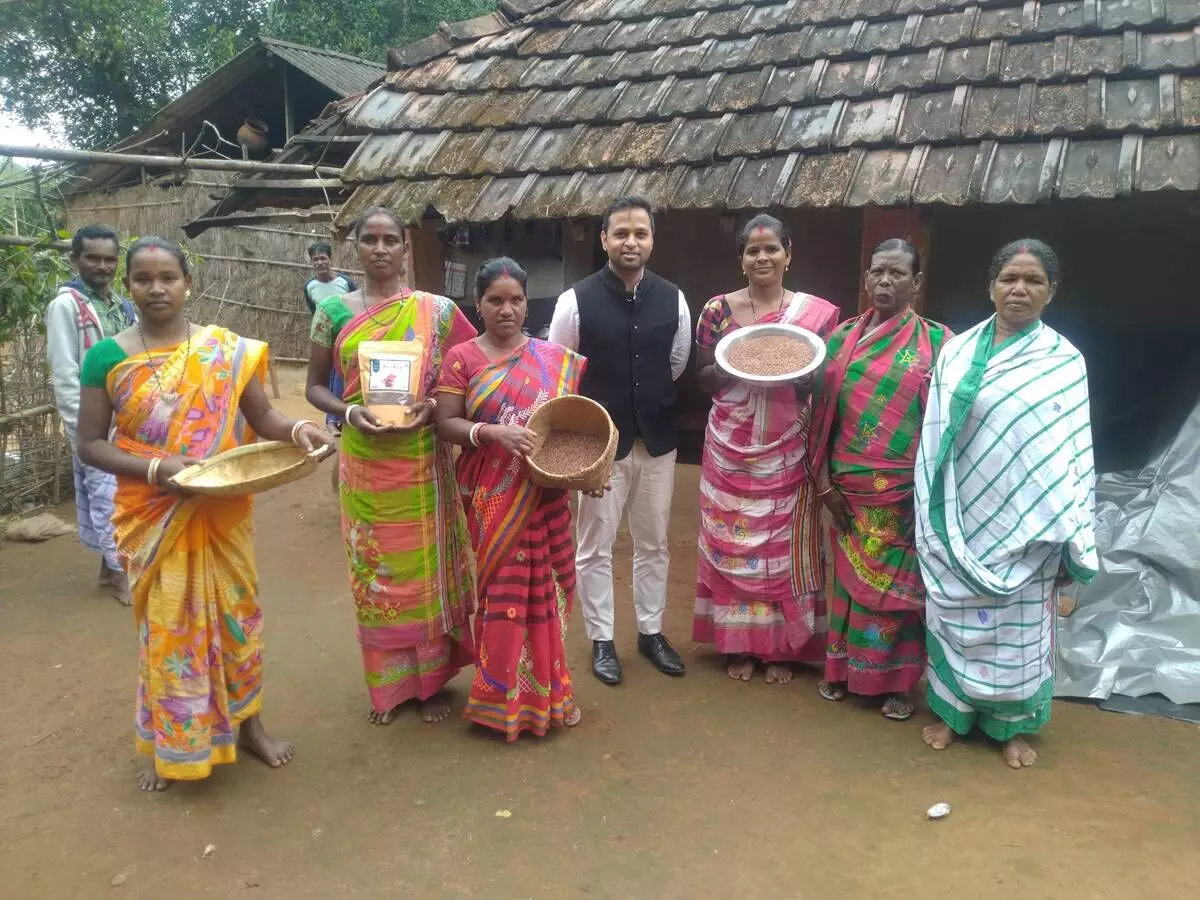
The indigenous paddy from which red rice is made, takes less water to grow and it thrives even amidst adverse conditions.
The Facility Centre produces about 35 kilograms of dhenki red rice a day. Much of the rice is exported to Maharashtra, Karnataka, Tamil Nadu, Delhi and West Bengal. The selling price of this rice variety outside Odisha is between Rs 140 and Rs 160 a kilogram. “Nearly 70 quintals of rice a month are exported to other states,” Rahan Marndi of Agnikumari Van Dhan Vikas Kendra, told Gaon Connection.
Also Read: Black Rice Matters in Chandauli
In 2021, Van Dhan Vikas Kendra set up stalls at Dilli Haat in New Delhi, under the Tribal Cooperative Marketing Development Federation to gauge public response to the dhenki red rice.
“It was a hit. Our monthly exports registered about a 10 per cent increase in the sale of red rice in two years. Now we are planning to increase the quantity of monthly exports to 400 quintals,” Rahan said.
According to ITDA project manager Pranab Das, many health conscious people are seeking dhenki-pounded rice. “It is rich in fibre, protein, iron besides having Vitamin B and minerals like magnesium and selenium,” he said.







